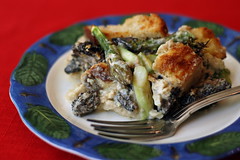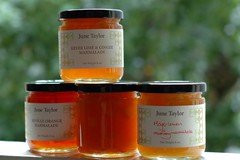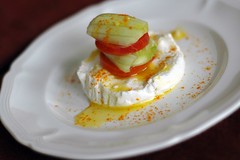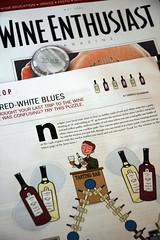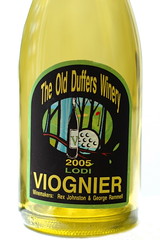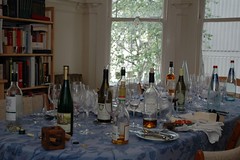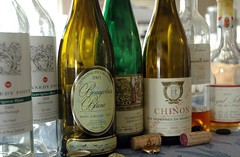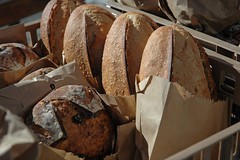Recipe for dinner party disaster.
Ingredients:
- a long gap since the last dinner party
- two more guests than we normally seat
- an extra course above our norm
- a Saturday time slot instead of Sunday
- several untested recipes or dishes in development on the menu
- a guest list that includes three food bloggers and their spouses, who could expose me as a charlatan with a wave of the keyboard
Combine all ingredients in a single evening. Wait for tears.
Melissa and I weren't trying to add every conceivable obstacle to our dinner party plans; it just worked out that way. Happily, the god of kitchen catastrophes had business elsewhere and our guests had a good time (or so they say). We invited Meriko and Russell, Fatemeh and C., and Joy and Jon.
Long-time readers won't be surprised to hear that I spent two weeks making all the ingredients for the party, down to the puff pastry. Melissa didn't take pictures during the dinner because we wanted people to enjoy the food without waiting for the photo op to finish. I noticed Jon snapping some shots, so perhaps pics will appear later.
Appetizers: Fatted Calf Petit Sec aux Herbes, buttermilk-fried Meyer lemons, olives. Skookum oysters with lemon and mignonette
2005 Kennedy Point Sauvignon Blanc, Marlborough, New Zealand
Guests always enjoy batter-fried citrus, but it turns out Joy loves fried lemons with an unchecked zeal. I finally got to use my new oyster knife, which Melissa got me after Ed gave me a sneak peek at the oyster knife he recommends in the current issue of The Art of Eating. My verdict: my new Dexter-Russell SI22 beats the annoying Oxo I used before.
Amuse: Pork rillette and green garlic potstickers
This is one leg of a "Trio" dish I'd like to do some day: Pork fat three ways. I'm practiced at making rillettes by now, but I finally figured out the best way to shape potstickers. Fold both halves up to meet each other, rather than folding one half all the way over. The result is much nicer.
Soup: Dungeness crab bisque with apple-bread croutons or Turkey consomme with cacao nibs
2003 Domaine de Lalande, Beaujolais
Julia Child accurately calls crab bisque a "labor of love." Crab carcasses in the freezer yielded the crab butter and crab stock a week and a half ago, but this dish still took two after-work evenings to finish. I've combined consommé and chocolate before, but I think I prefer my original incarnation, which used a solid chocolate block instead of nibs. With the nibs, the crystal-clear consommé clouds up instantly.
Entrée: Foie gras terrine with pain de mie and rhubarb compote or Fatted Calf Pâté Maison with pickled sour cherries, radishes, and olives
2004 J.J. Christoffel Erben, Ürziger Würzgarten Riesling Spätlese, Mosel-Saar-Rüwer
Main: Duck confit with conserved lemon-mint gnocchi and red wine reduction
2002 Charles Joguet, Les Varennes du Grand Clos, Cabernet Franc de Pied, Chinon
This batch of duck confit was the second using Jojo's technique. When I made the first batch, I thought it was a bit salty, so I intended to reduce the salt in this batch. But then a big plop of salt came out of the jar. I cursed and shouted, and did my best to scoop out some of the excess. I must've done a good job, because the duck was noticeably less salty this time. It's still not as succulent as Curt's, and I'm now convinced that this is because he uses the legs from foie gras ducks, which naturally have more fat.
Cheese: Redwood Hill Farms Bucheret, roasted beets, 25-year-old aceto balsamico tradizionale, Kumquat powder
1996 Domaine Fontanel, Rivesaltes Ambré
Dessert: Apricot jam and candied hazelnut napoleon, lemon curd, and ginger dust.
2000 Royal Tokaji Company, Tokaji Aszù, 5 Puttonyos
I figured this dessert would explode spectacularly when I cut into it. Compressed sheets of puff pastry teetering atop hazelnuts and pastry cream? How do you spell impending doom? I showed it to the guests before I cut it, but despite the fragile material and my inebriated state, I managed to produce reasonable pieces, which I sat atop dollops of lemon curd and surrounded with sprinklings of ginger dust.

